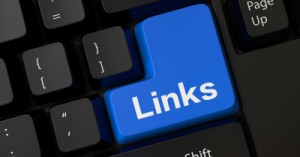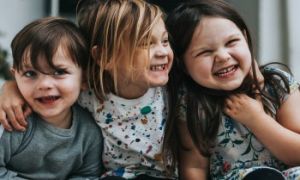Here’s a sample learning story to give you an idea of how to document and celebrate a child’s learning journey:
Title: “Gardener Jack’s Discovery”
Observation
During outdoor playtime, Jack, a 4-year-old, was fascinated by the garden area. He spent a considerable amount of time digging in the soil, examining the plants, and asking questions about the different types of flowers. Jack found a worm and excitedly showed it to his friends, explaining that worms help the plants grow.
Reflection
Jack’s curiosity about the garden and his willingness to share his discoveries with peers demonstrate his growing interest in nature and science. His actions show a developing understanding of the natural world and the role of living organisms in the ecosystem.
Learning
Next Steps
-
Extend Learning: Plan a gardening project where children can plant their own flowers or vegetables. This will provide hands-on experience and further Jack’s understanding of plant growth and care.
-
Family Involvement: Encourage Jack’s family to visit the garden and share their own gardening experiences. They could also bring in photos or stories about their home garden to share with the class.
Visuals
Include actual photos or drawings of the child engaged in the activity.
Conclusion
Jack’s discovery in the garden highlights his natural curiosity and eagerness to learn. By providing opportunities for hands-on exploration and involving his family, we can support Jack’s ongoing development and foster a lifelong love of nature.
Linking Learning Stories To The EYLF
Linking learning stories to the Early Years Learning Framework (EYLF) helps to demonstrate how children’s experiences and activities align with key developmental outcomes. Here’s how you can effectively link learning stories to the EYLF:
1. Observation and Documentation
- Detailed Observations: Start with detailed observations of the child’s activities, interactions, and achievements. Note specific behaviors, language, and context.
- Photos and Artifacts: Include photos, drawings, and other artifacts that capture the child’s learning experience.
2. Reflection and Analysis
- Reflect on Learning: Reflect on what the observations reveal about the child’s development. Consider how the child’s actions relate to the EYLF outcomes.
- Link to EYLF Outcomes: Identify which EYLF outcomes are demonstrated through the child’s activities. The EYLF has five key outcomes:
- Outcome 1: Children have a strong sense of identity.
- Outcome 2: Children are connected with and contribute to their world.
- Outcome 3: Children have a strong sense of wellbeing.
- Outcome 4: Children are confident and involved learners.
- Outcome 5: Children are effective communicators.
3. Writing the Learning Story
- Narrative Structure: Write the learning story in a narrative format, describing the observed event in detail. Use a storytelling approach to make it engaging.
- Highlight EYLF Links: Clearly highlight how the child’s actions and learning relate to specific EYLF outcomes. Use direct quotes from the EYLF to support your analysis.
4. Planning and Next Steps
- Future Learning Opportunities: Suggest future activities or experiences that can extend the child’s learning. Link these suggestions to the EYLF outcomes to show continuity in learning.
- Family Involvement: Encourage families to contribute their observations and ideas for future learning. This helps to create a holistic view of the child’s development.
Example Learning Story Linking To The EYLF
Title: “Exploring the Garden”
Observation: During outdoor play, Mia, a 3-year-old, spent time exploring the garden. She carefully examined the flowers, picked up leaves, and asked questions about the different plants. Mia also found a ladybug and showed it to her friends, explaining that it helps the plants.
Reflection: Mia’s curiosity and engagement with the natural environment demonstrate her developing understanding of the world around her. Her interactions with peers show her ability to communicate and share knowledge.
Link to EYLF Outcomes:
- Outcome 2: Children are connected with and contribute to their world: Mia’s exploration of the garden and her interest in the plants and insects show her connection to the natural environment.
- Outcome 5: Children are effective communicators: Mia’s ability to explain her findings to her friends demonstrates her communication skills.
Next Steps:
- Extend Learning: Plan a gardening project where children can plant their own flowers and learn about plant care. This will further Mia’s understanding of the natural world.
- Family Involvement: Invite families to share their gardening experiences and bring in photos or stories about their home gardens.
By linking learning stories to the EYLF, you can provide a clear and structured way to document and support children’s development.
How To Involve Children In Their Learning Story
Involving children in their learning stories can make the process more engaging and meaningful for them. Here are some strategies to help you include children in documenting their own learning:
1. Interactive Discussions
- Ask Questions: After an activity, ask children open-ended questions about what they did, how they felt, and what they learned. This helps them reflect on their experiences.
- Encourage Storytelling: Let children narrate their own stories. They can describe their actions, thoughts, and feelings, which you can then incorporate into the learning story.
2. Visual Documentation
- Photos and Drawings: Take photos of children during activities and ask them to draw pictures related to their experiences. Include these visuals in the learning story.
- Child-Made Art: Use children’s artwork to illustrate their learning. Ask them to explain their drawings and include their explanations in the story.
3. Digital Tools
- Video Recordings: Record short videos of children talking about their activities and learning. These can be shared with families and included in digital learning stories.
- Interactive Apps: Use apps that allow children to create digital stories with text, images, and audio. This can be a fun and interactive way for them to document their learning.
4. Collaborative Projects
- Group Reflections: After group activities, have a discussion where each child shares their perspective. This can be documented as a collective learning story.
- Peer Feedback: Encourage children to give feedback on each other’s work. This can help them learn to appreciate different viewpoints and contribute to each other’s stories.
5. Family Involvement
- Home Contributions: Ask families to share observations and stories from home. This can provide a more comprehensive view of the child’s learning and development.
- Family Interviews: Conduct short interviews with family members about the child’s interests and achievements. Include these insights in the learning story.
6. Reflective Practices
- Learning Journals: Provide children with journals where they can draw or write about their daily experiences. Review these entries together and use them to create learning stories.
- Self-Assessment: Encourage older children to assess their own work and set goals. Include their reflections and goals in the learning story.
Example Activity
Activity: Planting Seeds
- Observation: Children plant seeds in small pots and water them daily.
- Discussion: Ask children to describe what they did each day and how the plants are changing.
- Visuals: Take photos of the children planting and caring for the seeds. Have them draw pictures of the plants at different stages.
- Reflection: Record a video of children talking about what they learned about plants and growth.
- Family Involvement: Invite families to share stories about gardening at home.
By involving children in their learning stories, you not only make the documentation process more engaging but also empower them to take ownership of their learning.
Difference Between Individual Learning Stories and Group Learning Stories
Individual learning stories and group learning stories both serve to document and celebrate children’s learning, but they focus on different aspects of the learning experience. Here’s a breakdown of the key differences:
Individual Learning Stories
- Focus: These stories center on a single child’s experiences, development, and achievements.
- Personalization: They provide a detailed account of the child’s actions, thoughts, and feelings, making them highly personalized.
- Developmental Insights: They offer insights into the child’s unique developmental journey, strengths, and areas for growth.
- Family Engagement: They are often shared with the child’s family to highlight individual progress and involve them in the learning process.
- Examples: Observing a child mastering a new skill, such as tying their shoes, or documenting their exploration of a new interest, like dinosaurs.
Group Learning Stories
- Focus: These stories capture the collective experiences and interactions of a group of children.
- Collaboration: They emphasize teamwork, shared learning, and social interactions among the group.
- Community Building: They highlight how children work together, solve problems, and support each other, fostering a sense of community.
- Holistic View: They provide a broader view of the learning environment and how different children contribute to and benefit from group activities.
- Examples: Documenting a group project, such as building a model city, or capturing a collaborative play scenario, like a pretend grocery store.
Similarities
- Structure: Both types of stories follow a similar structure, including observation, reflection, learning analysis, and future planning.
- Purpose: Both aim to document and celebrate learning, provide insights for educators, and engage families in the educational process.
- EYLF Alignment: Both can be linked to the Early Years Learning Framework (EYLF) outcomes to demonstrate how activities support children’s development.
Choosing Between Them
- Context: Use individual learning stories when you want to focus on a child’s personal growth and achievements. Opt for group learning stories when you want to highlight collaborative efforts and social learning.
- Balance: A balanced approach, incorporating both individual and group learning stories, can provide a comprehensive view of children’s learning experiences.
By understanding and utilizing both types of learning stories, you can create a rich and varied documentation of children’s learning journeys.
Creative Ways To Combine Individual and Group Learning Stories
Combining individual and group learning stories can create a rich, multifaceted view of children’s learning experiences. Here are some creative ways to blend these narratives:
1. Themed Projects
- Individual Contributions: Have each child work on a part of a larger themed project, such as a class mural or a garden. Document each child’s individual contribution and reflections.
- Group Story: Combine these individual stories into a comprehensive narrative that shows how each child’s work contributed to the overall project. This highlights both personal achievements and collaborative efforts.
2. Class Journals
- Personal Entries: Encourage children to write or draw their own entries in a class journal about their daily activities and learning experiences.
- Group Reflections: Periodically, have group discussions where children share their entries. Document these discussions to create a group learning story that includes individual perspectives.
3. Learning Story Panels
- Individual Panels: Create individual panels for each child that showcase their learning stories with photos, drawings, and written reflections.
- Group Display: Arrange these panels together on a bulletin board or digital display to form a larger story. This visual representation shows how individual learning contributes to the group’s overall development.
4. Collaborative Books
- Personal Pages: Each child creates a page about a specific learning experience, including their thoughts, feelings, and what they learned.
- Class Book: Compile these pages into a class book. This book can be shared with families and revisited throughout the year to reflect on collective growth.
5. Digital Portfolios
- Individual Sections: Use digital tools to create individual sections for each child’s learning stories, including photos, videos, and written reflections.
- Group Projects: Include sections for group projects where children can add their contributions and reflections. This creates a dynamic, interactive portfolio that showcases both individual and group learning.
6. Storytelling Sessions
- Personal Narratives: Have children share their individual learning stories during circle time or storytelling sessions.
- Group Compilation: Record these sessions and compile them into a group learning story. This can be shared as a video or audio recording with families.
7. Interactive Displays
- Individual Highlights: Create interactive displays where each child’s learning story is highlighted with photos, artifacts, and written reflections.
- Group Interaction: Include interactive elements like QR codes that link to videos of group activities or collaborative projects. This allows viewers to see the connection between individual and group learning.
Example Activity
Activity: Building a Community Garden
- Individual Stories: Document each child’s role in the garden project, such as planting seeds, watering plants, or designing garden signs. Include their reflections and photos.
- Group Story: Create a timeline of the garden’s development, showing how each child’s contributions helped the garden grow. Include group discussions and collaborative decision-making moments.
By creatively combining individual and group learning stories, you can provide a holistic view of children’s learning experiences, highlighting both personal growth and the importance of collaboration.
Involving Families In Contributing To Learning Stories
Involving families in contributing to group learning stories can enrich the documentation process and strengthen the connection between home and school. Here are some creative ways to engage families:
1. Family Story Contributions
- Home Observations: Encourage families to share observations and stories from home that relate to group activities. For example, if the class is working on a gardening project, families can share their own gardening experiences.
- Storytelling Sessions: Invite family members to participate in storytelling sessions where they share their own childhood stories or cultural tales with the class.
2. Interactive Projects
- Collaborative Art: Create collaborative art projects where children and their families contribute pieces. Document the process and final artwork as a group learning story.
- Family Interviews: Conduct interviews with family members about their experiences and insights related to the group’s activities. Include these interviews in the group story.
3. Digital Involvement
- Video Messages: Ask families to record short video messages about their child’s participation in group activities. These can be compiled into a digital group story.
- Online Platforms: Use digital platforms like Seesaw or ClassDojo to share group stories and invite families to comment and add their own reflections and photos.
4. Cultural Sharing
- Cultural Days: Organize cultural days where families share traditions, foods, and customs. Document these events as part of the group learning story.
- Cultural Artifacts: Encourage families to bring in cultural artifacts or items related to the group’s learning themes. Include these contributions in the story.
5. Family Workshops
- Interactive Workshops: Host workshops where families and children work together on group projects, such as science experiments or craft activities. Document the collaborative process and outcomes.
- Parent-Child Activities: Plan activities that require parent-child collaboration, like building a model or cooking a recipe. Include photos and reflections from these activities in the group story.
6. Community Events
- School Events: Involve families in school events like fairs, exhibitions, or performances. Document these events as group stories, highlighting family participation.
- Field Trips: Invite families to join field trips and contribute their observations and experiences to the group story.
Example Activity
Activity: Community Garden Project
- Family Contributions: Ask families to share their gardening tips, photos of their home gardens, or stories about their gardening experiences.
- Group Story: Document the children’s and families’ contributions to the garden project, including planting, caring for the plants, and harvesting. Include photos, quotes, and reflections from both children and families.
By involving families in these ways, you can create richer, more diverse group learning stories that reflect the collective experiences and contributions of the entire learning community.
Further Reading
How To Write A Learning Story
Learning Stories For Assessment
Descriptive Words For Documentation, Observations and Reports







 Here is the list of the EYLF Learning Outcomes that you can use as a guide or reference for your documentation and planning. The EYLF
Here is the list of the EYLF Learning Outcomes that you can use as a guide or reference for your documentation and planning. The EYLF The EYLF is a guide which consists of Principles, Practices and 5 main Learning Outcomes along with each of their sub outcomes, based on identity,
The EYLF is a guide which consists of Principles, Practices and 5 main Learning Outcomes along with each of their sub outcomes, based on identity, This is a guide on How to Write a Learning Story. It provides information on What Is A Learning Story, Writing A Learning Story, Sample
This is a guide on How to Write a Learning Story. It provides information on What Is A Learning Story, Writing A Learning Story, Sample One of the most important types of documentation methods that educators needs to be familiar with are “observations”. Observations are crucial for all early childhood
One of the most important types of documentation methods that educators needs to be familiar with are “observations”. Observations are crucial for all early childhood To support children achieve learning outcomes from the EYLF Framework, the following list gives educators examples of how to promote children's learning in each individual
To support children achieve learning outcomes from the EYLF Framework, the following list gives educators examples of how to promote children's learning in each individual Reflective practice is learning from everyday situations and issues and concerns that arise which form part of our daily routine while working in an early
Reflective practice is learning from everyday situations and issues and concerns that arise which form part of our daily routine while working in an early Within Australia, Programming and Planning is reflected and supported by the Early Years Learning Framework. Educators within early childhood settings, use the EYLF to guide
Within Australia, Programming and Planning is reflected and supported by the Early Years Learning Framework. Educators within early childhood settings, use the EYLF to guide When observing children, it's important that we use a range of different observation methods from running records, learning stories to photographs and work samples. Using
When observing children, it's important that we use a range of different observation methods from running records, learning stories to photographs and work samples. Using This is a guide for educators on what to observe under each sub learning outcome from the EYLF Framework, when a child is engaged in
This is a guide for educators on what to observe under each sub learning outcome from the EYLF Framework, when a child is engaged in The Early Years Learning Framework describes the curriculum as “all the interactions, experiences, activities, routines and events, planned and unplanned, that occur in an environment
The Early Years Learning Framework describes the curriculum as “all the interactions, experiences, activities, routines and events, planned and unplanned, that occur in an environment


